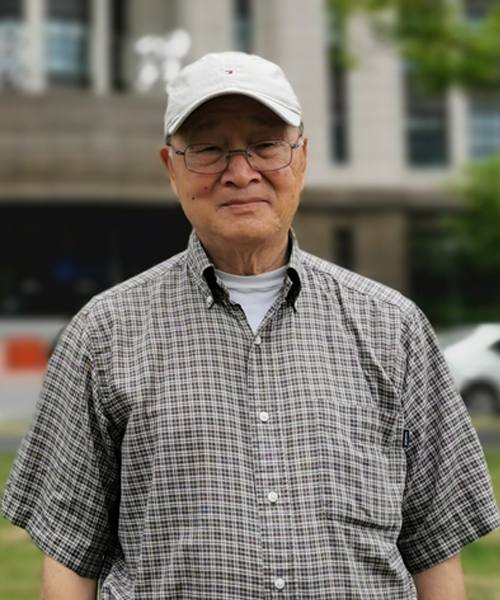TcSUH EventS
Special Seminar
Meeting the Needs of the Future Through the Use of Nanotechnology and Renewable Energy
by: Dr. Seamus A. Curran
Date: Friday May 20, 2011
Time: 12:00 pm – 1:00 pm
Location: Houston Science Center – Building 593 — Room 102
Overview
In the last decade there has been a huge investment in the field of 'nanotechnology', which has meant that we have derived more control, better processes in we are making and how systems function. Alongside this nano revolution has come the evolution of new nano-based materials, from nanotubes (based on carbon and inorganic hybrid materials), fullerenes and thin film technologies. However, what we have learned from the science and technology of 'nano' is that it has enabled us to look at different fields of use, addressing more complex problems and developing new solutions to some of the grand challenges facing us including energy. Photovoltaic or solar cells provide some clear advantages to other renewable sources of energy and is an option to energy generation. I will address and compare thin film solar cells as used in inorganic systems and discuss why this is not the suitable orientation for OPV's but that other orientations are better suited.
Back to TcSUH News & Events

Bi-Weekly Seminar
Understanding of the Superconductivity and Spin Density Wave phase in Iron-Pnictides
Date: Thursday May 12, 2011
Time: 12:00 pm – 1:00 pm
Location: Houston Science Center – Building 593 — Room 102
Overview
Based on a simple band model of two orbitals proposed by our group (D. Zhang, PRL (2009), where the asymmetry of As atoms above and below the Fe-plane is considered, we studied theoretically the coexistence of the spin-density-wave (SDW) and superconductivity in electron-doped iron-pnictide superconductors [such as BaFe_(2−x)Co_xAs_2] using Bogoliubov-deGennes equations. The phase diagram is mapped out and the evolution of the Fermi surface as the doping varies is demonstrated. For the parent compound with only SDW order, the low-energy part of the density of states and the magnetic band structure have been investigated. These results are consistent with ARPES experiments. The local density of states (LDOS) has also been calculated from low to high doping, and in the presence of a magnetic field. We show that the asymmetry in the coherent peaks, the domain wall formation and the vortex core states observed by STM experiments can all be explained by our theoretical study. It needs to point out that the band model
Back to TcSUH News & Events

Special Seminar
Rationally Designed Peptide Conjugates for Directing the Simultaneous Synthesis and Assembly of Complex Nanoparticle Superstructures
by: Nathaniel Rosi
Date: Thursday May 05, 2011
Time: 12:00 pm – 1:00 pm
Location: Houston Science Center – Building 593 — Room 102
Overview
Nanoparticle assemblies exhibit interesting physical properties that will be useful for a variety of potential applications. The properties of these assemblies depend on the size, shape, and composition of the component nanoparticle building blocks and also on the spatial arrangement of these building blocks within the assembled structure. Therefore, it is critically important to have methods for controlling the precise placement and organization of nanoparticles within nanoparticle assemblies. In this presentation, we will detail a new peptide-based method for simultaneously controlling both the synthesis and growth of nanoparticles. This method merges concepts from peptide-mediated 'biomineralization' and peptide-based self-assembly. We will detail the basic strategy and discuss how this strategy can be used to carefully design and prepare complex nanoparticle superstructures, including nanoparticle double helices, hollow nanoparticle-based capsules, and 1-D nanoparticle chains. We will also discuss how this method can be used to carefully control the composition and metrics of the target nanoparticle superstructures.
Back to TcSUH News & Events
TcSUH Annual Student Research Symposium
41st TcSUH Semiannual Spring Student Symposium
by: TcSUH Administration
Date: Tuesday May 03, 2011
Time: 1:00 pm – 7:00 pm
Location: Houston Science Center – Building 593 — Room 102
Overview
All members of TCSUH are invited to attend the 41st Semiannual Student Symposium for presentations of original student work. The Student Symposium will begin at 1:00 p.m. with a brief review of the Center's progress during 2011 and an outline of plans for the future. The afternoon will then continue with a series of 15-minute presentations representing novel work by undergraduate and graduate students from each laboratory. A Symposium Program, including the schedule and abstracts for each presentation, will be provided at the door. The TcSUH BBQ will follow the symposium at 5:30 p.m. in the HSC Commons Area
Back to TcSUH News & Events

Special Seminar
Interface Engineered Metamaterials for Energy Harvest and Storage
Date: Thursday April 28, 2011
Time: 4:00 pm – 6:00 pm
Location: Science & Research Building 1 – Building 550 — Room 634
Overview
The last few decades have seen an explosion in the development of new materials with unique physical properties for sustainable energy harvest and storage applications, driven in parallel by the demands of technology and the inquisitiveness of basic sciences and engineering. Solid Oxide Fuel Cell devices (SOFCs) have promised a high-energy efficiency for sustainable energy producing technology. We have developed a unique interface engineered nano-technique for new materials fabrication and novel concept device development, and successfully achieved various excellent results. We have demonstrated that the interface engineered YSZ/GCO heterostructures have excellent oxygen exchange properties for the development of an intermediate temperature solid oxide fuel cell (IT-SOFC); the double perovskite PrBaCo2O5.5 highly epitaxial films have ultra fast oxygen exchange kinetics; and the ordering/disordering nanostructural double perovskite LaBaCo2O5.5 structures have ultra sensitive oxygen exchange properties and stable chemical nature for the development of high temperature chemical sensors and membranes in the high temperature reduction environment. We also have successfully achieved the direct integration of interface engineered ferroelectric heterostructures on polycrystalline metallic tapes with excellent dielectric property for the next generation of supercapacitance devices for energy storage applications. Details will be discussed in the talk.
Back to TcSUH News & Events
